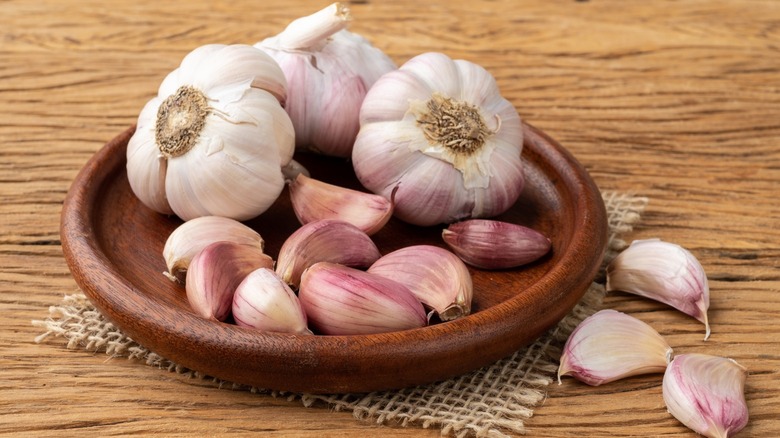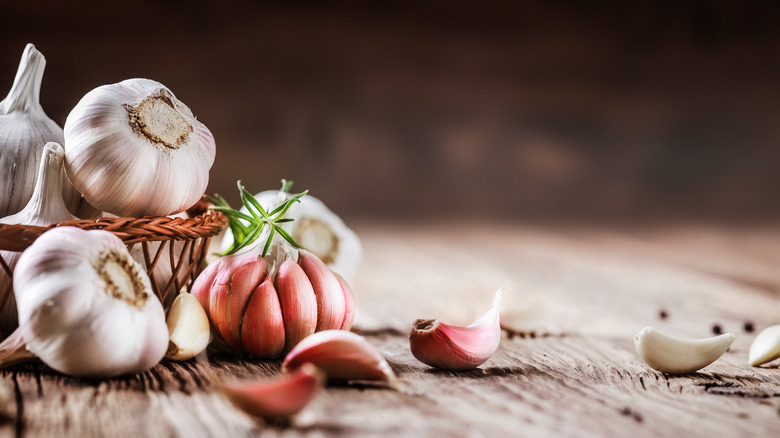What Exactly Is Purple Garlic (And Is It Different Than Normal Garlic)?
Garlic brings a beloved flavor and depth to so many global cuisines, whether raw, roasted, or sautéed. While it always boasts that pungent, recognizable smell, your everyday head of garlic is just one of dozens of types, each with its own unique flavor profile, color, and texture. When it comes to comparing common garlic varieties, though, it's often a question of purple versus white. Even the increasingly popular black garlic, for example, is actually a fermented version of white garlic. And what's the story with the purple kind?
White garlic is far more common in U.S. grocery stores, as it's easier to grow and often imported from China. But in other parts of the world, purple garlic might be easier to find than its white counterpart. If you aren't used to seeing purple garlic, there are a few visible, head-scratching differences. First of all, purple garlic heads are generally smaller than their white siblings, and they contain a stalk that grows through their center that makes them a "hardneck" garlic species. White garlic, on the other hand, is larger and is generally a "softneck" variety, so it doesn't have that fibrous stalk running through its middle. Secondly, you might notice when cutting purple garlic that the cloves are firmer and juicier than white garlic cloves. But is one version better to cook with than the other?
Purple garlic might actually be better
Purple garlic is not just juicer, but it might actually be better, period. Compared to white garlic, purple garlic's flavor is sweeter and milder when fresh, making it the perfect addition to uncooked condiments and sauces. It's considered healthier, too. Research has found that purple garlic contains more allicin, a compound known to boost the immune system. It also contains an additional antioxidant called anthocyanin. This is the compound that gives purple garlic its color and comes with a variety of health benefits, like lowering heart disease and cancer risks.
Another point for purple garlic is its convenience. Generally, it is easier to peel than white garlic due to its thicker, papery skin, as well as cloves that fall off the stalk easily. Anyone who has spent time trying to peel garlic cloves with sticky hands knows how frustrating this ubiquitous step in kitchen prep can be.
In terms of flavor, texture, and ease, purple garlic may win out. However, it does fall to white garlic on one front: durability. Purple garlic varieties generally don't last as long on the shelf as white ones, making it harder to import from faraway places or store for extended periods. However, it makes up for this by having fewer cloves, meaning you'll use up each head more quickly. No matter which variety you choose, you can't really lose: Garlic tastes amazing and is an indispensable ingredient no matter which color it comes in.

